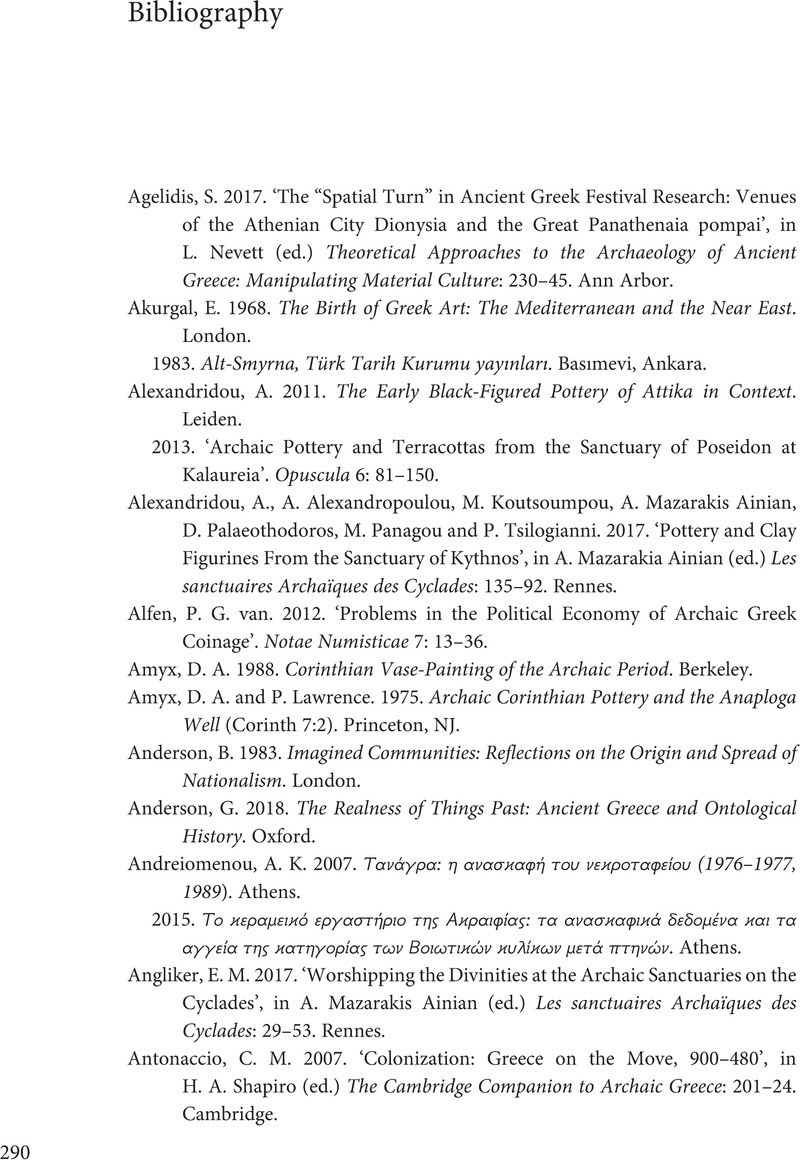 Connecting Communities in Archaic Greece
Connecting Communities in Archaic Greece Book contents
- Connecting Communities in Archaic Greece
- British School at Athens Studies in Greek Antiquity
- Connecting Communities in Archaic Greece
- Copyright page
- Contents
- Figures
- Tables
- Acknowledgements
- Abbreviations
- 1 Introduction
- 2 Economic Networks
- 3 Economic Networks
- 4 Entangled Networks
- 5 Political Networks
- 6 Political Networks
- 7 Conclusions
- Bibliography
- Index
- References
Bibliography
Published online by Cambridge University Press: 13 July 2023
- Connecting Communities in Archaic Greece
- British School at Athens Studies in Greek Antiquity
- Connecting Communities in Archaic Greece
- Copyright page
- Contents
- Figures
- Tables
- Acknowledgements
- Abbreviations
- 1 Introduction
- 2 Economic Networks
- 3 Economic Networks
- 4 Entangled Networks
- 5 Political Networks
- 6 Political Networks
- 7 Conclusions
- Bibliography
- Index
- References
Summary

- Type
- Chapter
- Information
- Connecting Communities in Archaic GreeceExploring Economic and Political Networks through Data Modelling, pp. 290 - 325Publisher: Cambridge University PressPrint publication year: 2023


